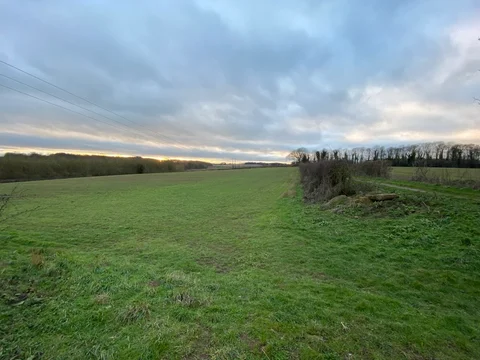
Hooton Pagnell Solar Park
The Hooton Pagnell Effect
The amount of renewable energy (in MWhrs) annually
*Please note that calculations may be adjusted to ensure maximum accuracy




Hooton Pagnell Solar Park
British Solar Renewables (BSR) is launching a community consultation to gather feedback on plans for a proposed Solar Park and Battery Energy Storage System (BESS) development. The Hooton Pagnell Renewable Park would deliver 49.9MW of solar generated electricity to the National Grid, co-located with a battery energy storage capacity of up to 30MW. BSR intends to submit a planning application to The City of Doncaster Council Autumn 2025.
The proposed Hooton Pagnell Renewable Park would produce enough renewable energy to power over 19,657 homes and save over 17,410 tonnes of CO2 emissions each year. The site is located on land to the south of Hooton Pagnell, a village and civil parish in the Metropolitan Borough of Doncaster in South Yorkshire, and on the border with West Yorkshire. It is approximately 3.8km northeast of Thurnscoe, 5.2km west of Adwick le Street and 9.5km northwest of Doncaster.
The community consultation will take place between Monday 16th June and Monday 14th July 2025. A drop-in consultation event will be held on Tuesday 24th June 2025 from 2pm-7pm at Cricket Pavilion, Hooton Pagnell Cricket Club, Butt Lane, Hooton Pagnell, Doncaster, DN5 7BW. A webinar will also be held on Thursday 26th June from 7pm to 8pm for those who cannot attend the in-person event. Local residents are encouraged to attend this event to find out more about BSR’s proposals, meet the project team and give their feedback. All feedback received will assist with finalising the project proposals ahead of submitting the planning application.
Hayley Burke, Project Manager at BSR, said: “We encourage the community to take part in our consultation and share their local knowledge and views on our proposals, ahead of the project design being finalised and a planning application submitted.
“We have organised a range of channels to gather community feedback, including our drop-in consultation event which provides an invaluable opportunity to speak with our project team face-to-face. There is also a project website, with an online feedback form, email address, Freepost address and hotline number to submit feedback to. BSR welcomes all responses regarding Hooton Pagnell Renewable Park.”
The UK Government has a legally binding climate target to meet net zero by 2050 and must increase renewable energy development to reach clean power by 2030. Amid the climate crisis and rising energy costs, solar and BESS developments such as the Hooton Pagnell Renewable Park offer affordable, efficient green energy and help to enhance energy security and reduce consumer costs.
BSR plans to achieve a biodiversity net gain of at least 60% on the site of the Renewable Park. Proposed ecological enhancements include grazing sheep in the solar park for conservation, native landscaping initiatives such as wildflower meadows, tussock grass, and native species-rich grassland areas, tree and hedgerow enhancements, and other mitigations added as ecological survey results are analysed. The Renewable Park is a temporary development (40 years), allowing the infrastructure to be removed and agricultural land use reinstated following decommissioning, and a Soil Management Plan will aim to improve the existing soil when the land returns to agricultural use.
If planning consent is granted, once the project has been constructed, a £310,000 community fund for use towards suitable community projects would be provided upon energisation.
Visit the project website to find out more: www.bsr-hootonpagnell.co.uk
Stat References
Based on an annual average domestic consumption per household (Great Britain) of 3,799 kWh. Source BEIS, Regional and Local authority electricity consumption statics 2018.
Based on 'Emissions associated with the generation of electricity at a power station (Electricity generation factors do not include transmission and distribution). Source BEIS, Greenhouse gas reporting: conversion factors 2020.
